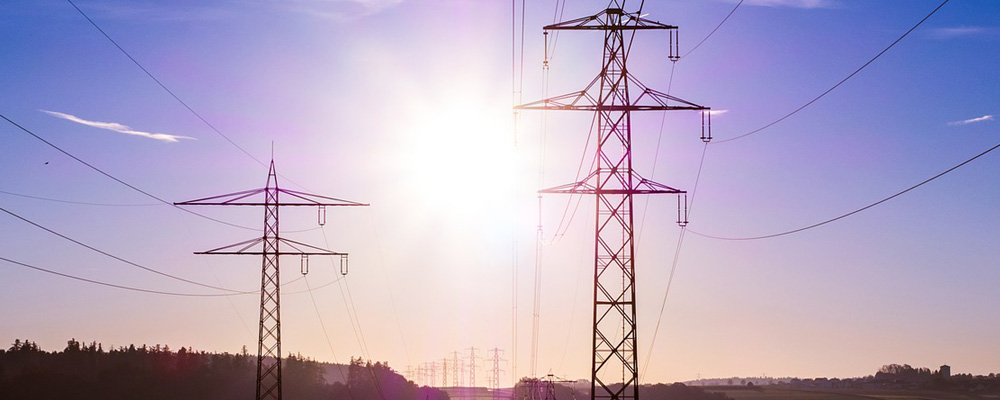Smart grids are electrical grids that include new technological innovations such as smart meters, automation, communication networks, and design features that accommodate distributed renewable energy generation such as rooftop solar panels.
Sacha Fontaine is the head of the Utility IoT Practice @ Theorem Geo Associates, and has graciously agreed to share his insights with Solar Consultant.
Q1. What is the biggest challenge facing widespread implementation of smart grids?
Sacha: Utility companies are not keen to implement renewables en mass. Existing power lines have capacity problems due to outdated designs, and it will cost a lot of money to upgrade them. The current power distribution design is based on central power generation. This means that the most high capacity power lines are close to the power plants, and the capacity gets reduced as power lines get further away from the plant.

Many old power lines would have to be upgraded to suit the smart grid.
The financial benefit for home owners is also questionable. Net metering is the most important aspect for residential customers who wish to sell electricity to the grid from their residential solar panels, and the current payback period is fairly long (~12 years with incentives in Florida).
Q2. What makes a smart grid better equipped to handle the growth of renewable energy such as solar and wind?
Sacha: Two key features of smart grids are 1) higher capacity in order to transmit power in both directions, and 2) fast communication in order to balance supply and demand for energy. These features can accommodate the “distributed generation” that comes with rooftop solar.
The smart grid needs to respond quickly to changes in generation capacity – and this is important if a large portion of the electrical generation comes from solar. For instance, imagine a large cloud passes by and blocks out the sun. The solar generation for the area under the cloud could drop by 90% within a minute. The electrical grid needs to be able to quickly respond to the drop in solar generation capacity by bringing other generation sources online.

Solar panel electrical outputs can be severely affected by weather conditions.
The last thing I want to mention is that an AMI (“advanced metering infrastructure” which is one of the first building blocks for a smart electrical grid) can potentially save consumers money. One utility that implemented the smart meters went from having 300 meter readers to 30 meter technicians. This is a large labour cost savings that can result in reduced electricity bills.
Q3. Does a smart grid make it easier for utility companies to take advantage of consumers through a complex pricing system?
Sacha: In my opinion this is really not a concern as utility companies are mostly regulated in North America. This means that most of the time the utility companies cannot just arbitrarily increase prices with no oversight from the government.
Q4. How are smart grids protecting themselves from hackers?
Sacha: Smart grids getting hacked is definitely a concern. With traditional central power plants, it is easy to protect the brains of the operation as you just need to guard the control center inside the power plant; or the Transmission or Distribution Operations Center (and there are power plants that have armed guards with submachine guns to do this).
The worry is that smart grid devices in the field (with no human supervision) may be leveraged by hackers to gain entry into the system and result in the entire grid becoming compromised.

Smart devices in the field may allow hackers to compromise the entire network / Image Credit: By EVB Energy Ltd
FERC (Federal Energy Regulator Commission) and NERC (North American Electric Reliability Corporation) are the federal agencies that look at the security of the electrical grid in the United States. These organizations were established since the electrical grid is considered to be the backbone of the US economy. They put in standards of operation, and ensure the grid’s safety as part of homeland security.
All utilities in the US and all of the ones that trade with the US (eg. Canadian utilities) must meet these standards.
Q5. Is there anything else you want our readers to know about smart grids?
Solar power generation is a promising avenue for residential customers, and smart grids are a key part of integrating rooftop solar into our energy infrastructure.
In addition to renewable energy sources, I would encourage people to look for improvements to their home to improve efficiency (eg. insulation, passive solar heating and cooling).
______________________

Sacha Fontaine is the head of the Utility IoT practice at Theorem Geo Associates, an engineering consulting firm focused on the utility industry. He has over 10 years of experience in leading Grid Modernization and Renewable Energy efforts. Sacha has supported several of the largest power suppliers including Duke Energy, Siemens, GE and Hydro-Quebec. He holds a Bachelor of Engineering from McGill University and is pursuing a Master of Finance at Harvard University. He can be reached at sfontaine@theoremgeo.com
